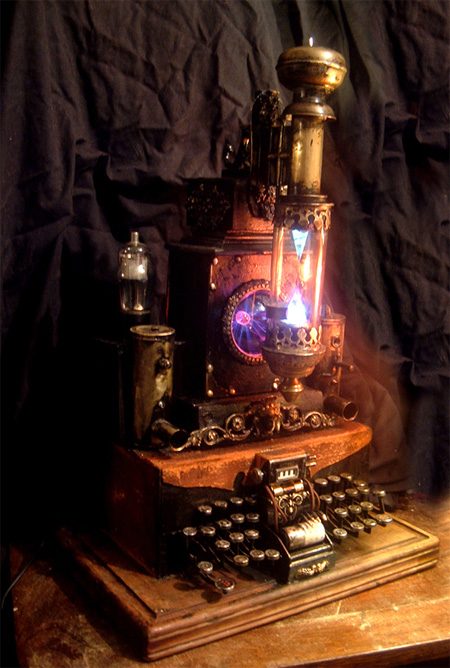
I am a real steampunk fan. This is hardly surprising.
Both my office and my home in Denver were designed in the coal age, and like my coal age predecessors I live close to where I work and can get their on sidewalks or city streets. The dominant features of the landscape that I pass en route to work, Washington Park and Speer Boulevard lining Cherry Creek, were put their in the steam era. My home furnishings are traditional, my long term shopping list includes an old fashioned wardrobe to address a house that was built with fewer closets than are common now.
My practice is also typical of the kind of practice that prevailed when our office was built. It is a referral business driven, civic minded, collegial small partnership that serves mostly privately held businesses and individuals who can afford to hire lawyers with their own money by the hour. We have not ridden either of the big late 20th century trends in the business of law, which has seen the rise on one hand of big firms serving mostly publicly held companies and the very affluent senior executives, and on the other hand, of public defenders offices and legal clinics and TV advertising driven personal injury firms that mostly serve people who can't afford lawyers with their own means.
Fastracks, Denver's massive expansion of its light rail system, is a return to its 19th century history, when neighborhoods like the one where I live were streetcar suburbs. While the military ultimately rejected the idea of building new transport airships (think Zeppelin), airships are returning to consideration of a niche means of transportation. While no one outside the Northeastern Corridor has established a high speed passenger rail line in the United States, people all over the country are considering ways to revitalize passenger rail in America. Skyscrapers, which many thought would never be built again due to the rise of the suburban office park, are going up in downtown Denver seemingly on every corner. They are building new brownstones in the Platte Valley. New Urbanism, an architectural ethos that tries to recapture many 19th century urban planning values, is one of the leading influences in how our built environment is changing.
A lot of this interest is being driven by the recognition that the days of our oil based economy are numbered, and so we a revisiting the technologies in place immediately prior to that oil based economy. More than coal produces electicity these days, but a shift to an economy where electricity is a cheaper driving force than oil brings us back to steam age technologies. After all, despite all the hype about electric cars as new technology, there were lots of electric car models being considered at the dawn of the 20th century. The electric car was killed by Ford with the Model T before it was killed by General Motors the second time around.
I could make an exhaustive list of pseudo-Victorian settings in fiction and theater (the Harry Potter series and the Golden Compass series jump to the top of that list), but the wikipedia link suffices to describe them.
My retro instincts go back well before Denver, however. My college experiences were at institutions still defined to a significant extent by their 19th century founding experiences. When I was taking physics at a local college my senior year in college, I used logarithm tables and infinite series approximations of circular functions instead of a scientific calculator, even on tests, as a personal eccentricity. I tried contacts briefly, but relied on glasses rather than trying laser eye surgery or return to much improved contract lenses.
I am also mystified by the completely oblivious to fashion practices of computer manufacturers given the fact that computers, a product sold in large quantities to successful and affluent companies and individuals, in addition to being tools, are also household and office furnishings in which customers expect a wide variety of choices. There are a few niche box conversion operations (one of which is a couple of blocks from my office on Speer Boulevard), but probably 99% of the market share for computer equipment belongs to cheap metal and plastic products in black or white or gray, with no ability of a consumer to choose even from those colors. The wireless revolution is being driven in part because wires all over the place are ugly.
Hat Tip to Non-Prophet for bringing the thought to mind.
No comments:
Post a Comment